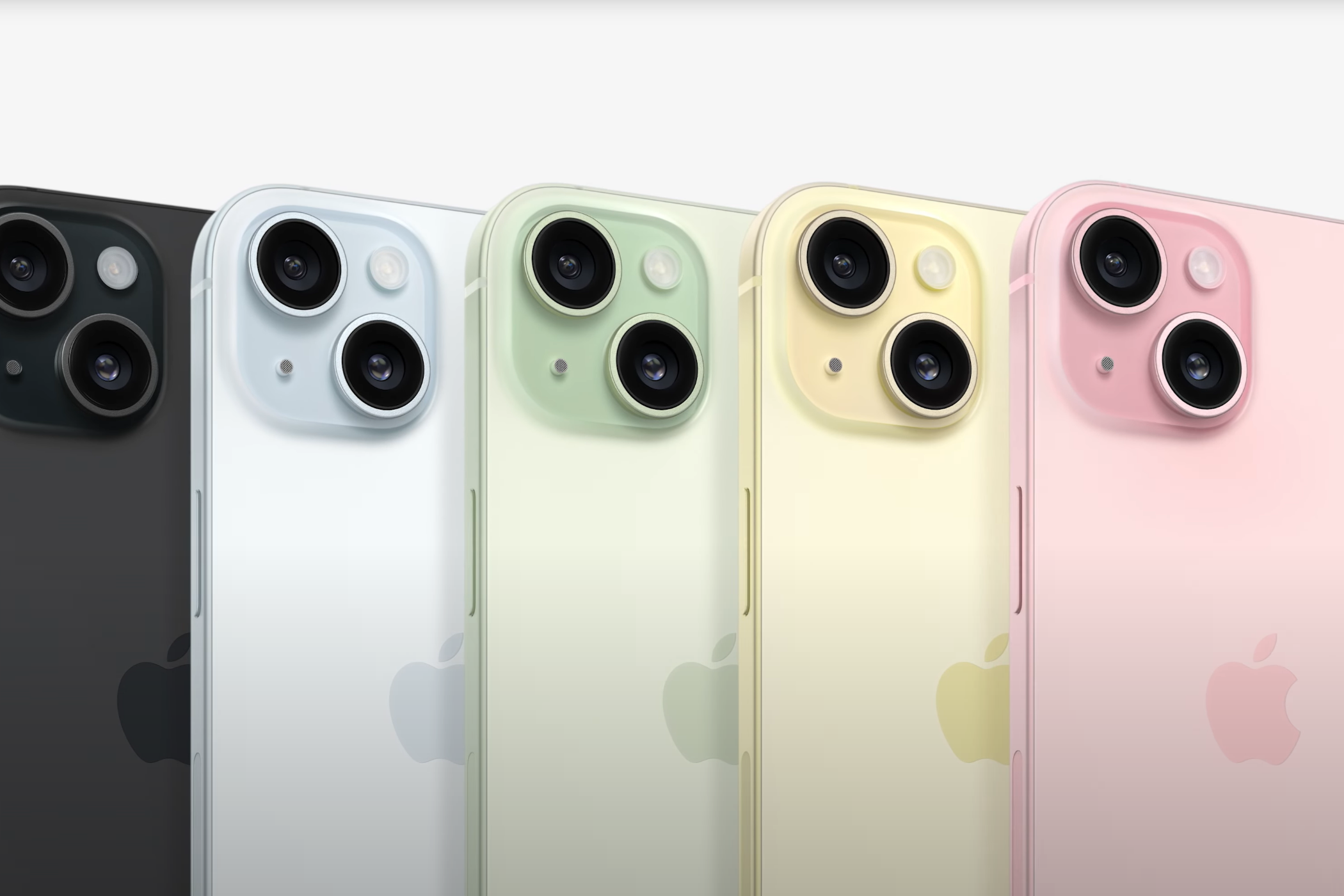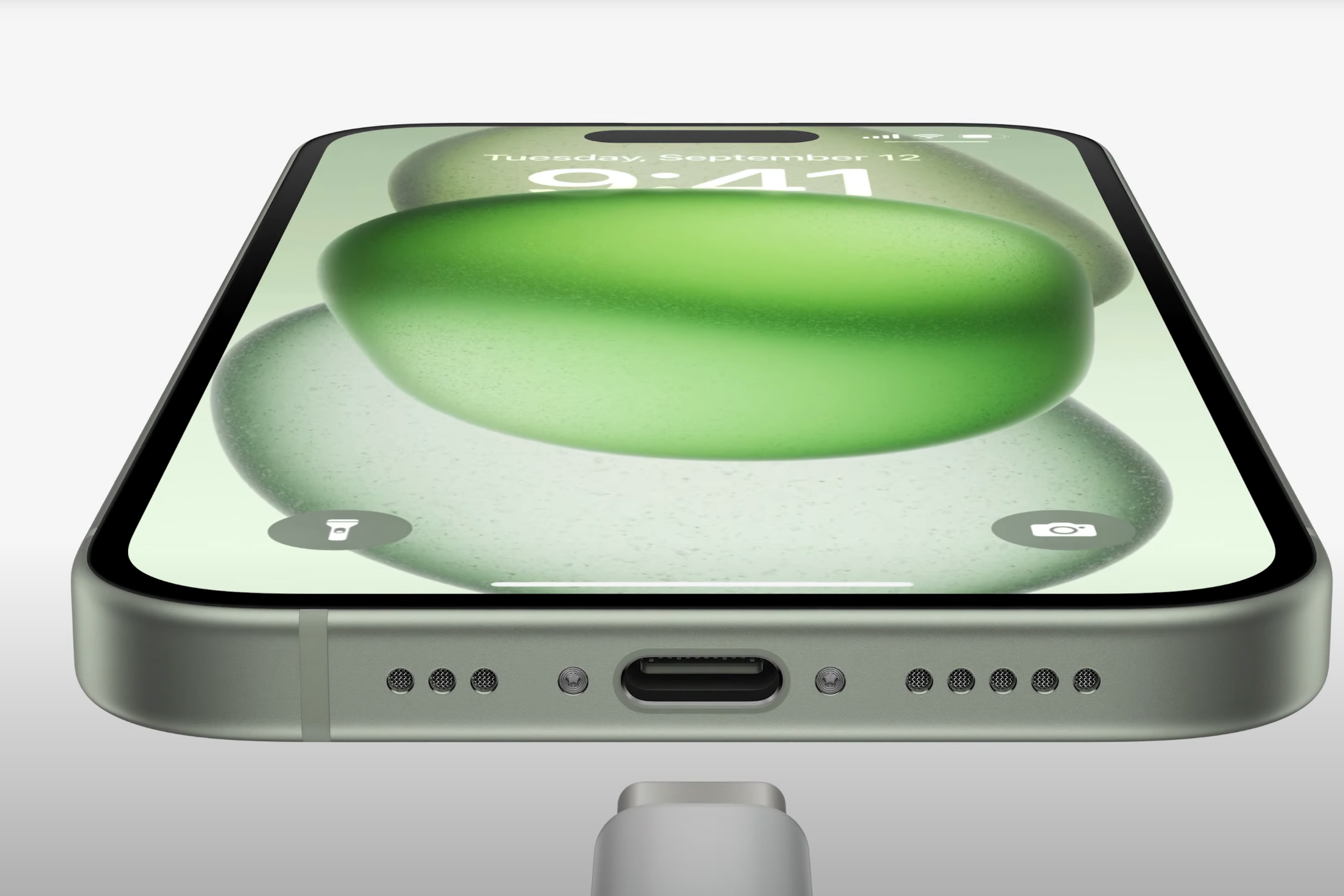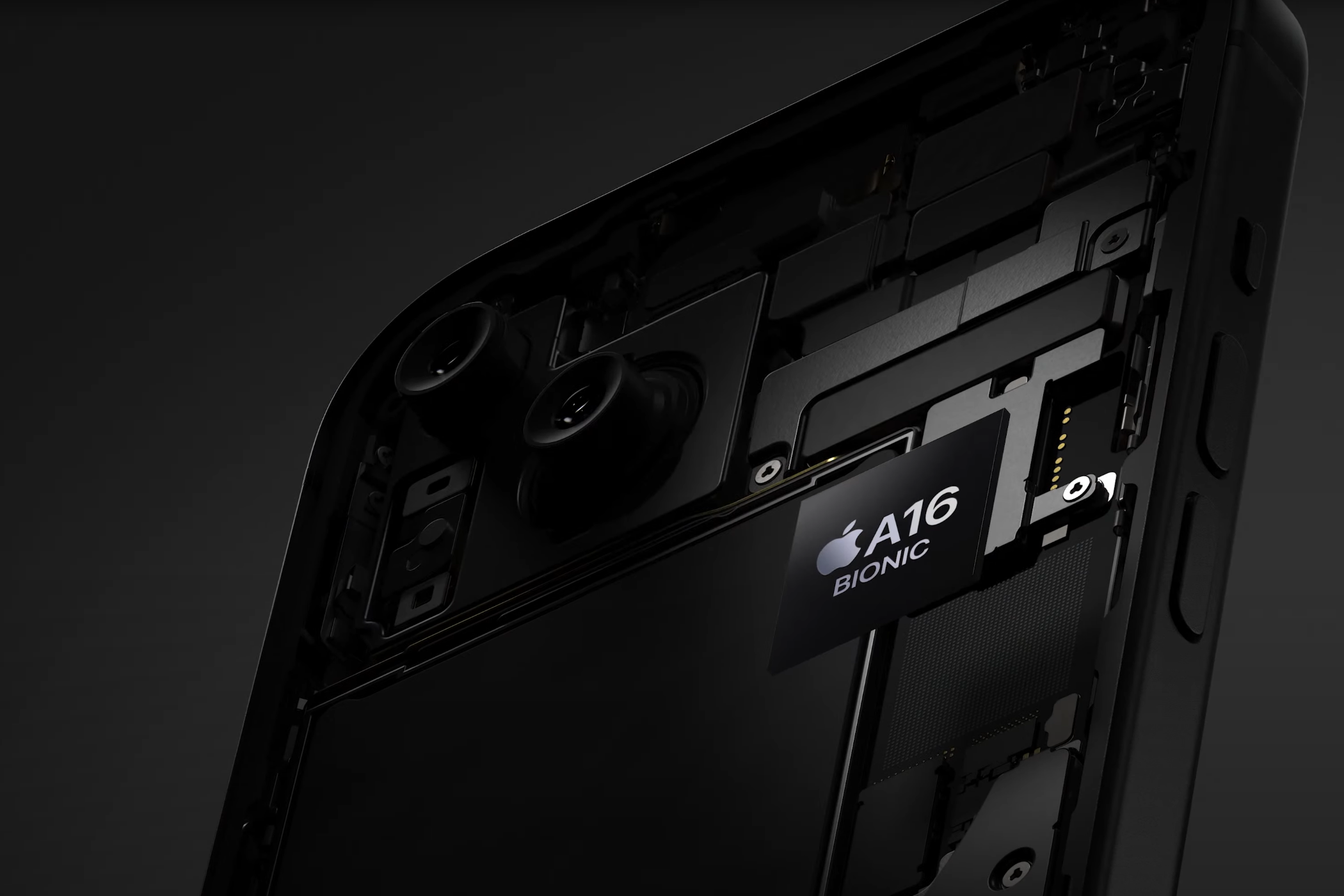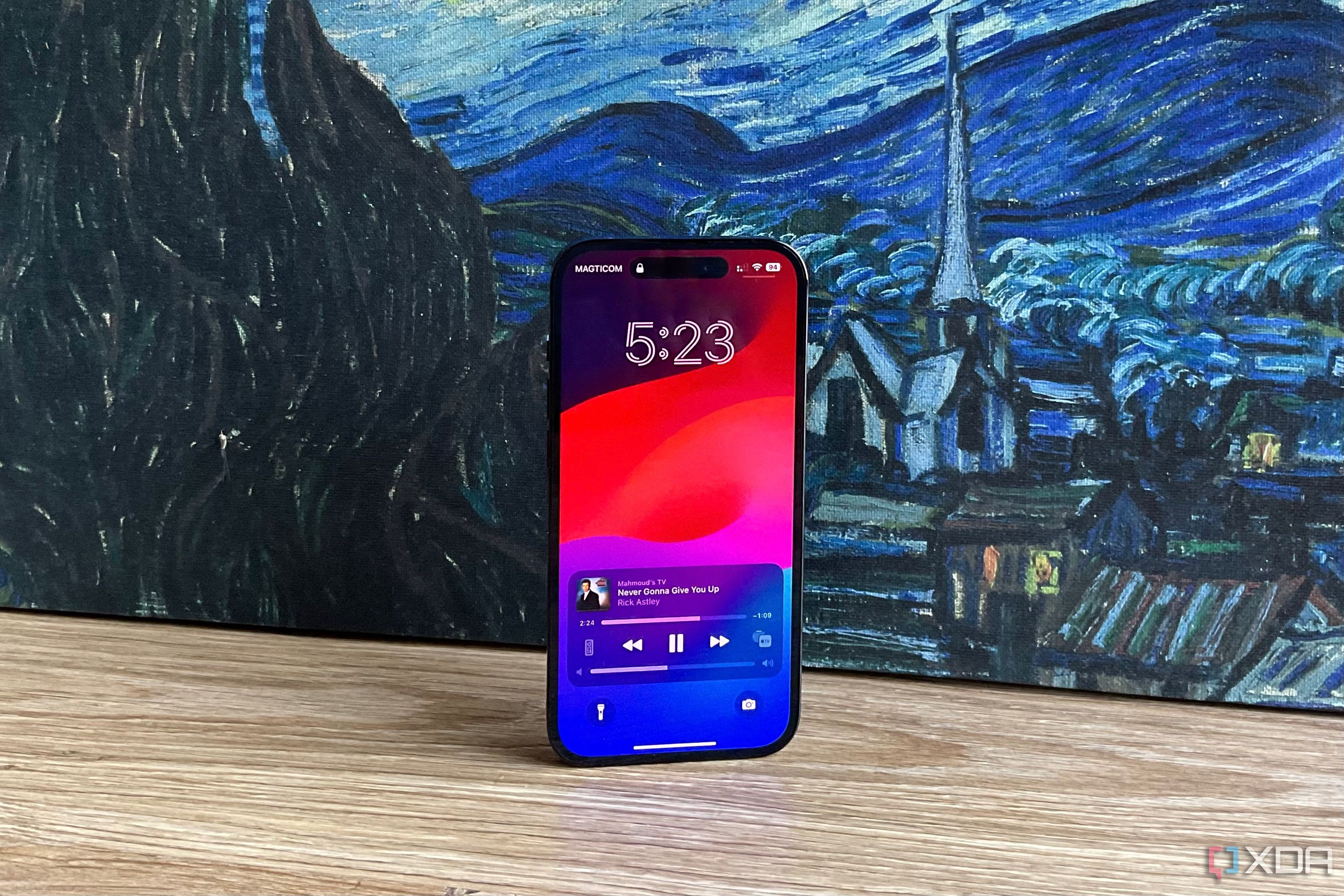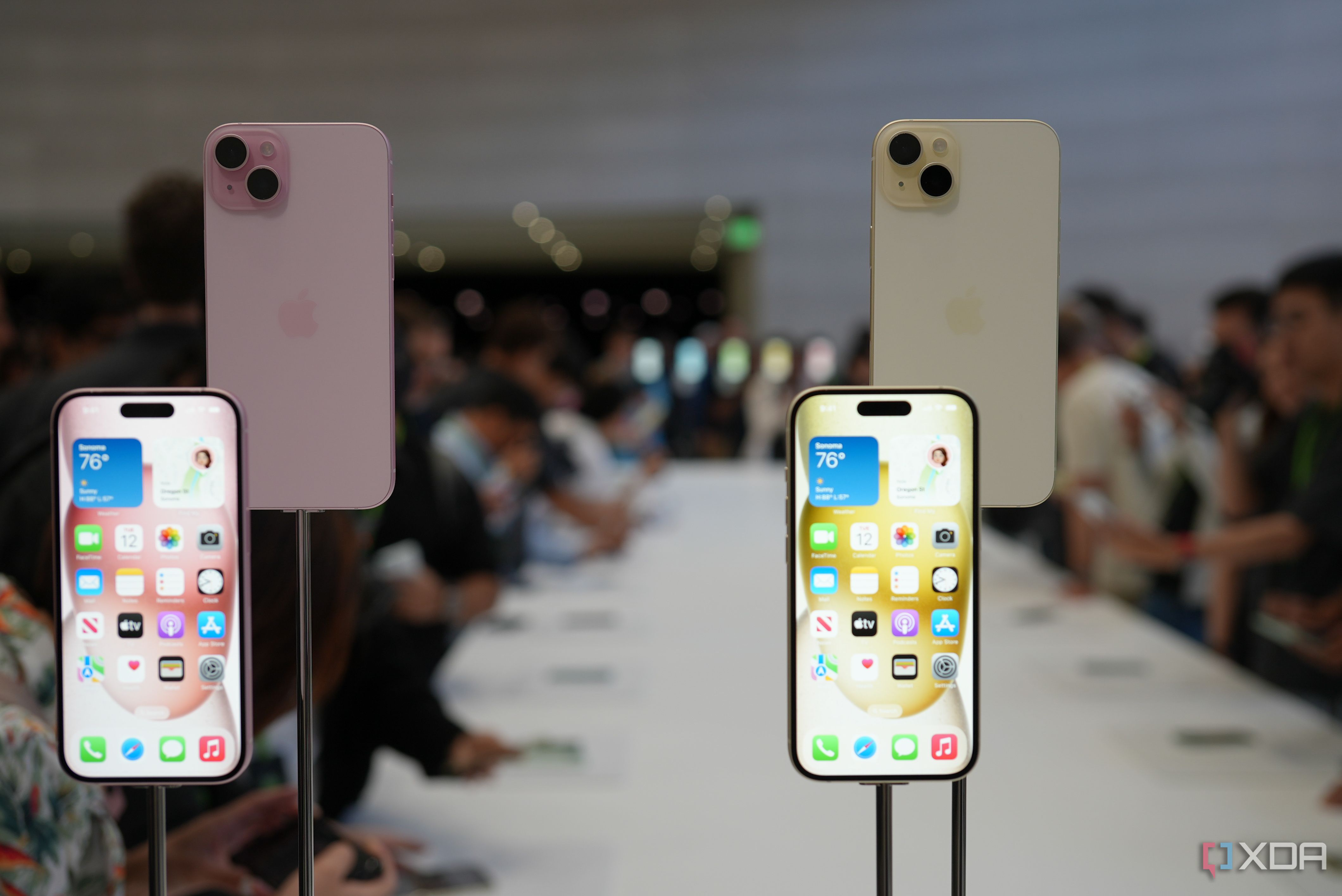-
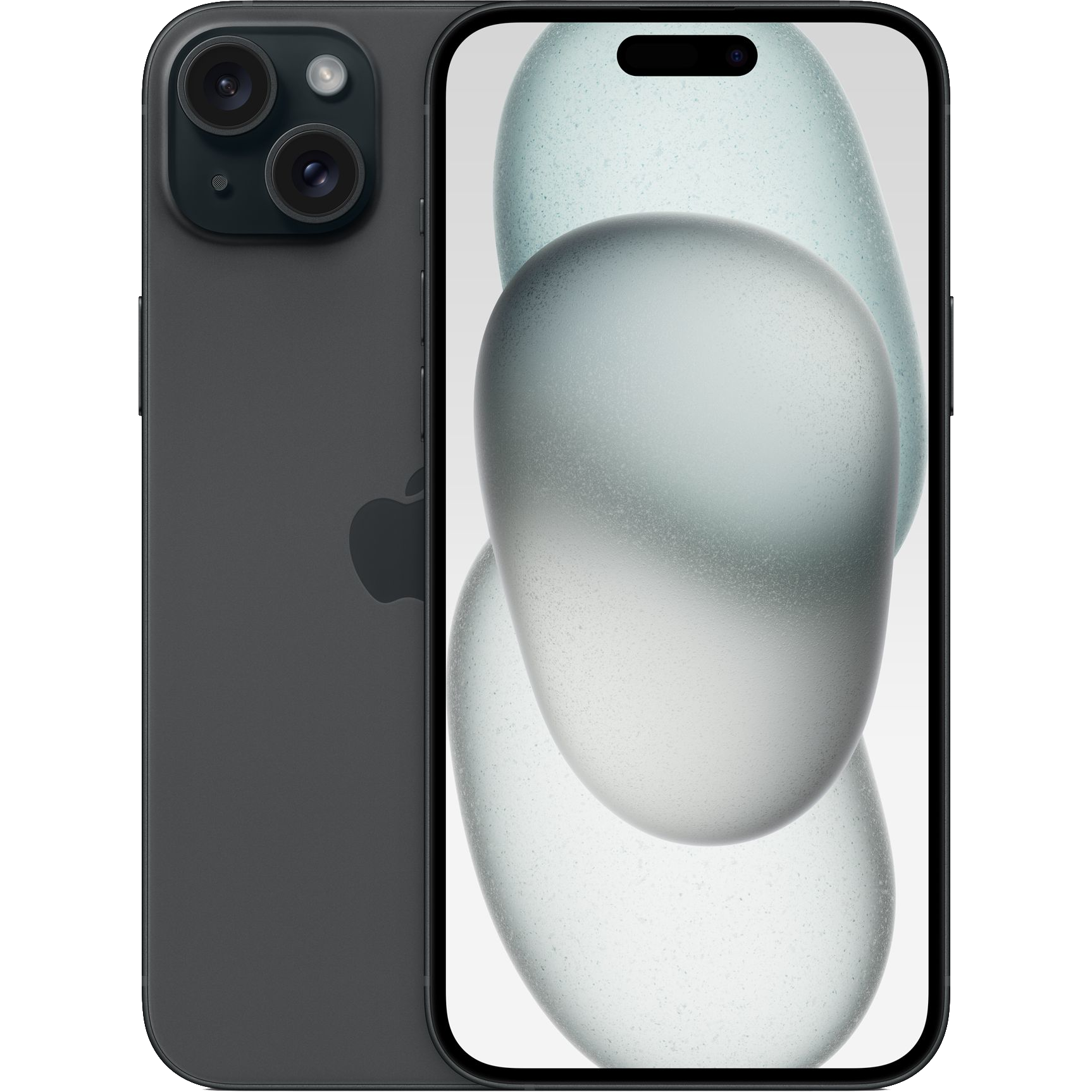
iPhone 15 Plus
The iPhone 15 Plus is a great base model smartphone from Apple. It features a bright 6.7-inch display up to 2000 nits and a 48 MP main camera.
Pros- Newer A16 Bionic processor
- 48MP main camera
- USB Type-C
Cons- $100 more expensive than the 14 Plus
- Same design
-
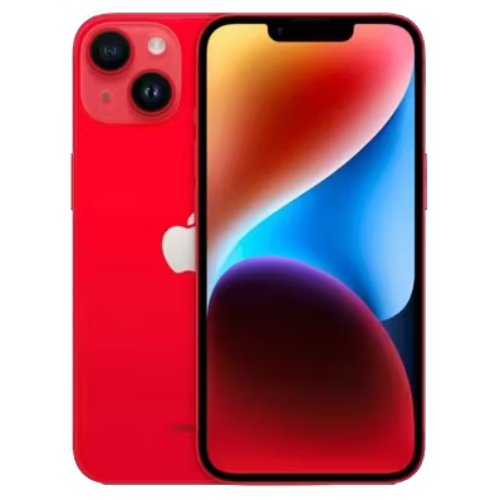
Apple iPhone 14 Plus
The iPhone 14 Plus comes with a larger 6.7-inch screen but misses out on the Dynamic Island and Always-On Display features of the Pro models.
Pros- Design is almost the same as the 15 Plus
- Processor is only a little slower
- $100 cheaper
Cons- Main camera is significantly lower quality
- Still has the old Lightning cable
With the launch of the iPhone 15, the older iPhone 14 models are technically replaced, but it’s not quite that simple. The iPhone 15 Plus has launched at $900 while the iPhone 14 Plus (still a great phone in its own right) is retailing for $800, a $100 discount for a high-end phone that’s just a generation older. If you’re wondering whether upgrading to the iPhone 15 Plus is a better idea than getting the older iPhone 14 Plus (or sticking with it if you already have one), here’s everything you need to know about how these two iPhones shape up.
iPhone 15 Plus vs iPhone 14 Plus: Price, specs, and availability
The iPhone 15 Plus is now available to order from Apple directly, retailers like Amazon and Best Buy, and also from cellular carriers, with shipping starting on Sept. 22. The $900 base model of the iPhone 15 Plus comes with 128GB of storage, and you can spend an extra $100 for 256GB or $300 for 512GB, making the lower-capacity models the best value.
The iPhone 14 Plus came out in 2022 and is currently going for $800, a $100 discount over the 15 Plus. Unlike older iPhones, you should be able to buy the 14 Plus for some time; given Apple’s current track record, the company will probably stop selling it directly with the release of the iPhone 17. Like the 15 Plus, the 14 Plus also starts at 128GB, but you can get 256GB for an extra $100 or 512GB for an extra $300.
-
iPhone 15 Plus Apple iPhone 14 Plus SoC Apple A16 Bionic Apple A15 Bionic Display 6.7-inch OLED Super Retina XDR 6.7-inch OLED, 60Hz, HDR 10, 1200nits Storage 128GB, 256GB, 512GB 128GB/256GB/512GB Battery 4,383mAh 4,323mAh Ports USB-C Lightning (USB 2.0) Operating System iOS 17 iOS 16 Front camera 12MP TrueDepth camera 12MP, F/1.9, PDAF Colors Blue, pink, yellow, green, black Midnight, Purple, Starlight, blue, red Weight 7.09 ounces (201 g) 7.16 ounces (203g) IP Rating IP68 IP68
iPhone 15 Plus vs iPhone 14 Plus: Design and display
Source: Apple
When it comes to size and weight, the iPhone 15 Plus and 14 Plus are practically the same. Their screens both measure at 6.7 inches across, are 7.8mm thick, and weigh just about 7 ounces. The materials haven’t changed either: a metallic band on the perimeter and glass on the back, though the iPhone 15 Plus’s back glass is somewhat more durable (though you’ll still want a good case just to be safe) and has more even coloring. At a glance or even side by side, you’ll have a difficult time telling these two iPhones apart.
The iPhone 15 Plus does have a pretty significant improvement in the form of its brighter Super Retina XDR display. The 14 Plus also has a Super Retina XDR screen, but it peaks at 1200 nits against the 2000 nits on the iPhone 15 Plus. All that extra brightness will come in handy both for more accurate colors as well as viewing your phone in sunlight. But otherwise, these displays are pretty much the same. You get about 460 pixels per inch (or PPI) on both since they’re about the same resolution and screen size.
Both iPhones also have a notch, but the iPhone 15 Plus’s notch is more than just a hole in the display; it’s what Apple calls a Dynamic Island. It’s still the area where the selfie camera is located, but it can also display useful information depending on the app in question. It’s more of an actual feature, rather than how most notches are just there to get a slightly bigger screen. Even if you don’t like notches on phones like the iPhone 14 Plus, you might like the 15 Plus’s Dynamic Island.
Another significant though less important change on the iPhone 15 Plus is its switch to USB Type-C. On a technical level, this isn’t an upgrade per se, but considering how much more universal Type-C is than Lightning, it’s probably an improvement for most people. USB Type-C means more options when it comes to chargers and data transfers, which is more about convenience than a simple upgrade.
Source: Apple
In the grand scheme of things, the iPhone 15 Plus is practically an iPhone 14 Plus with a brighter display and USB Type-C. Not that that’s completely unexpected since these models are just a year apart, but ultimately it does mean the 15 Plus isn’t really moving the needle. You’ll have to ask yourself whether these things actually matter to you.
iPhone 15 Plus vs iPhone 14 Plus: Power and performance
Source: Apple
One of the biggest differences between the iPhone 15 Plus and the 14 Plus is the processor. The 15 Plus uses Apple’s A16 Bionic, which came out in 2022, while the 14 Plus uses the A15 Bionic from 2021. While this is technically a one-generation difference, in reality it’s not that big. Both chips have the same amount of CPU and GPU cores, a similar amount of total cache, and are built on pretty similar processes. That means both performance and power efficiency are going to be pretty similar on both models.
That’s not to say the two chips are totally the same though, the A16 does come with a slightly higher clock speed, and its cache configuration is likely more optimal even though the A16 has a little less in total. Still, you should only expect maybe 10% to 20% better performance on the iPhone 15 Plus, and that’s in fairly intensive situations. In normal, daily tasks you’re not really going to see a performance difference. Ultimately, the A16 is pretty much a modestly improved A15.
It’s the same story for software as both phones will run iOS 17 when it comes out, and even though iOS 17 might demand slightly better hardware than iOS 16, it’s pretty obvious both the iPhone 15 Plus and 14 Plus will run it at about the same level of performance given how similar the A16 and A15 processors are. That being said, in the long run the 15 Plus will probably receive support for at least an extra version of iOS, though this is speculative and we won’t know for sure until years from now.
Neither is charging or battery life likely to be any different for the 15 Plus and 14 Plus. Both iPhones have the same 20W charging through their USB or Lightning ports and 15W wireless charging through MagSafe. We don’t know the size of the battery in the 15 Plus, but it’s almost certainly identical or nearly identical to the one in the 14 Plus given how similar their sizes are. When you also factor in the processor, battery life on both the 15 Plus and 14 Plus will almost certainly be very close.
Performance and power are overall the same between the iPhone 15 Plus and iPhone 14 Plus, and while that’s not such a terrible thing, it’s definitely another reason to not be super interested in the 15 Plus.
iPhone 15 Plus vs iPhone 14 Plus: Cameras
The one truly next-generation upgrade with the iPhone 15 Plus against the 14 Plus is the main camera. The 15 Plus uses what is essentially an upgraded version of the main camera found on the iPhone 14 Pro and 14 Pro Max (which was already one of the best phone cameras), using a 48MP lens that has so much more raw horsepower than the 12MP lens on the iPhone 14 Plus. The iPhone 15 Plus’s main camera also has nearly half the pixel size (which means higher resolution), but its aperture is slightly smaller, though that probably won’t be a significant issue.
That’s where the differences stop though. The selfie cameras on both iPhones are completely identical, featuring the same 12MP lens with the same sized aperture. The selfie camera is certainly still serviceable, but once again it’s another thing on the spec sheet that is the same for both iPhones.
iPhone 15 Plus vs iPhone 14 Plus: The 14 Plus is probably worth saving $100
Given how similar the iPhone 15 Plus is to the iPhone 14 Plus, that $100 higher price just doesn’t seem worth it. $100 on top of $800 isn’t a ton of money to spend, but you’re just not getting much for your money. If you care about a super bright display, USB Type-C, and a better main camera, the iPhone 15 Plus is the way to go, but the 14 Plus is going to get you at least 90% of the 15 Plus for $100 less. You could spend that $100 on the 256GB model of the iPhone 14 Plus, which would be noticeably better for anyone who finds themselves needing lots of storage on the go.

Apple iPhone 14 Plus
Better value
The iPhone 14 Plus comes with a larger 6.7-inch screen but misses out on the Dynamic Island and Always-On Display features of the Pro models.
Still, the 15 Plus isn’t all that more expensive and has that great main camera, a bright display, and a somewhat faster processor that’ll come in handy for gaming and other intensive tasks. The improved main camera and display might be a potent combination for photographers who are often outside in the daylight, and that might be worth $100.

iPhone 15 Plus
Better for photographers
The iPhone 15 Plus is a great base model smartphone from Apple. It features a bright 6.7-inch display up to 2000 nits and a 48 MP main camera.
[ad_2]


